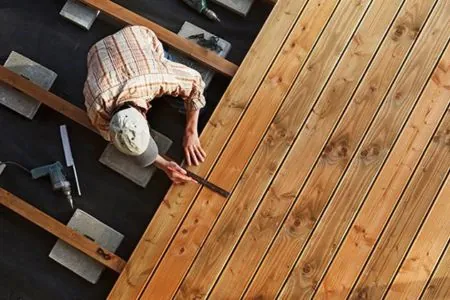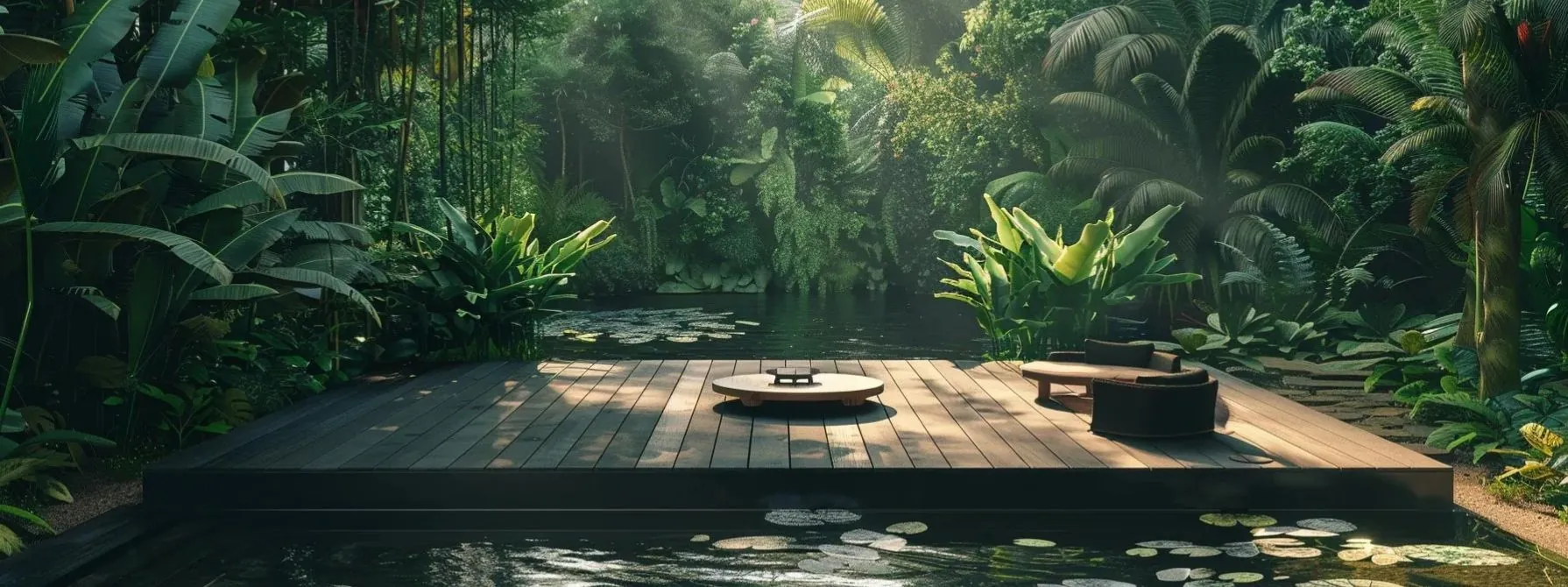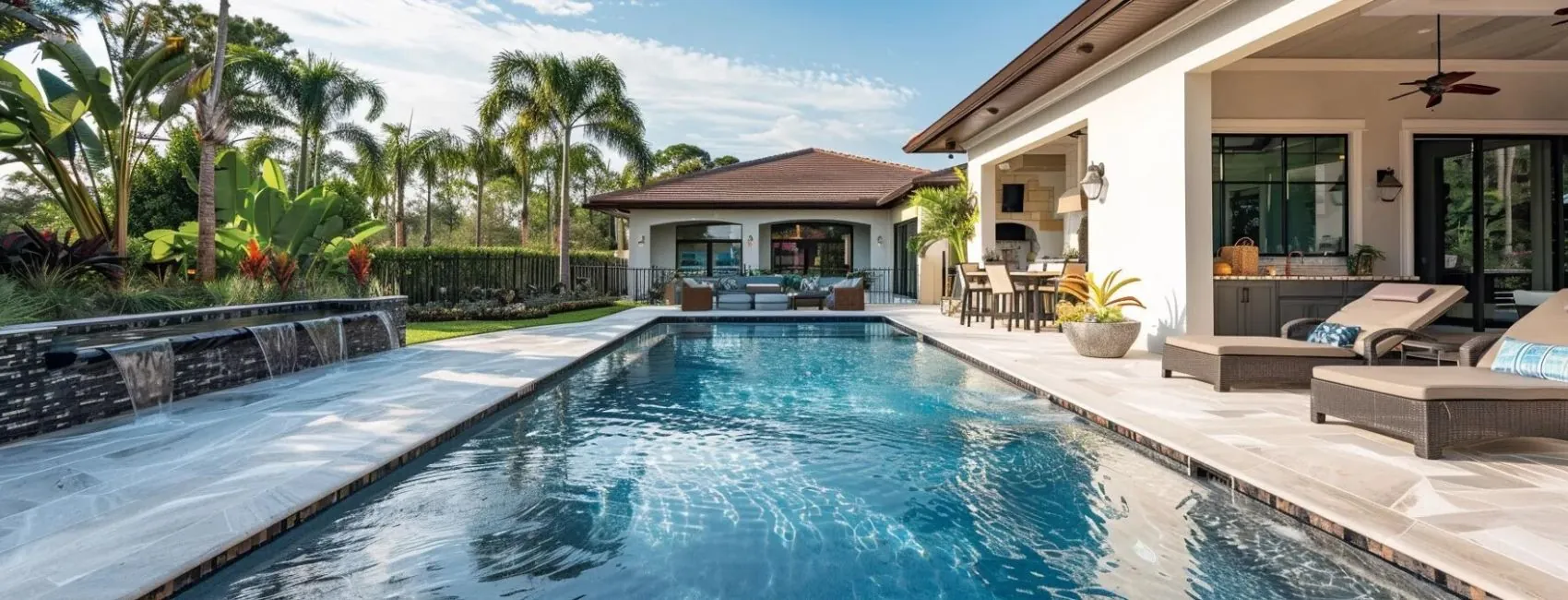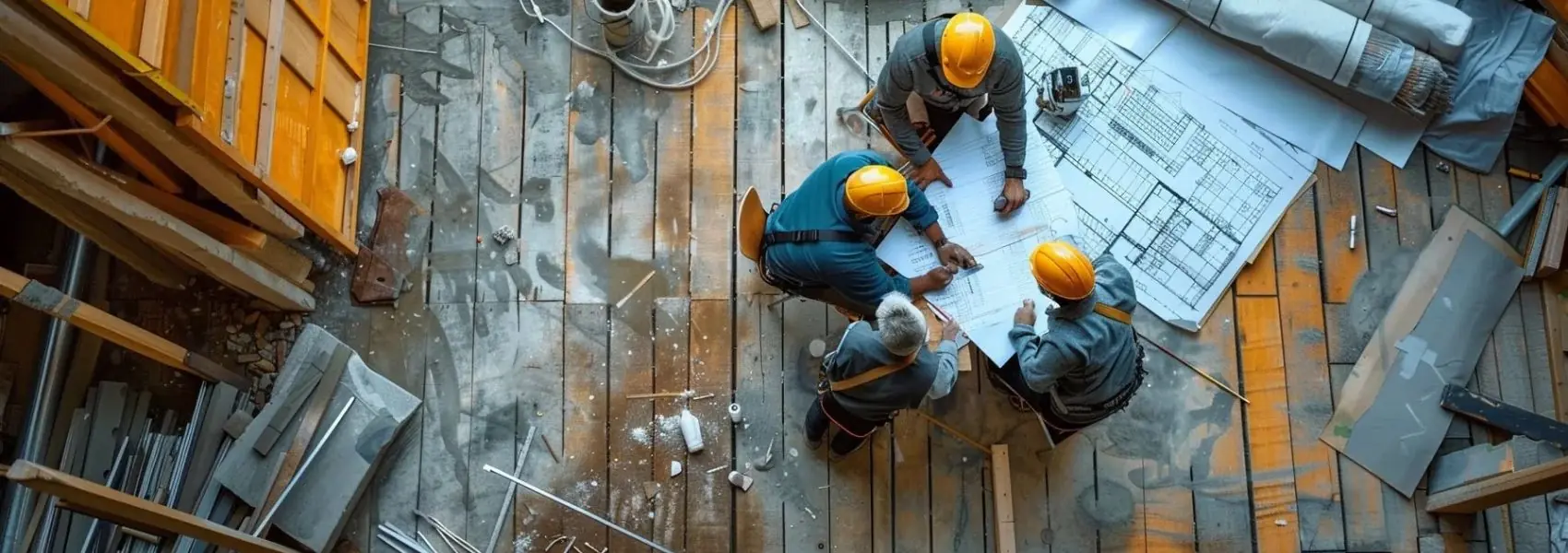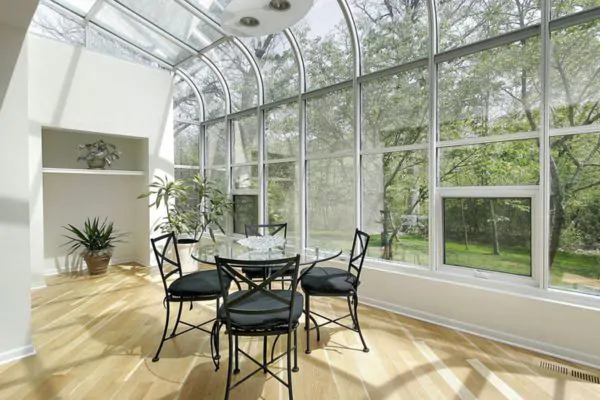
Choosing between a sunroom or a screened porch is a big decision for homeowners. It involves considering lifestyle preferences and how the space will be used. Any addition to the home can add value and appeal but it needs to be done correctly and choosing the right space to add can make all the difference.
A sunroom offers year-round comfort with climate control, making it a cozy extension of living space.
In contrast, a screened porch allows one to embrace the outdoors without the annoyance of pests.
It’s crucial to balance the desire for exposure to nature with the need for shelter and amenities. In this article, we will discover some ideal choices for enhancing your home’s living area and whether you need a sunroom or a screened porch.
Weighing in the Pros and Cons of a Sunroom and Screened Porch
A sunroom serves as a versatile addition to a home, offering a climate-controlled space that caters to enjoyment year-round. Its fully enclosed design allows natural light to come in without the interference of insects or the elements. This makes these areas a perfect spot for relaxation or entertainment regardless of the weather outside.
On the flip side, sunrooms can come with higher construction costs due to the need for insulation, windows, and potential heating or cooling systems. The complexity of its design also requires adherence to building codes and permits, which can add time and expense to the project.
A screened porch, by contrast, connects homeowners with the outdoors while providing a barrier against bugs. The breeze can flow freely through the mesh screens, offering a more authentic outdoor experience. It usually involves a simpler construction process, potentially making it a more cost-effective option.
However, a screened porch does not provide the same level of protection from the weather as a sunroom, limiting its use during extreme temperatures or inclement weather. The materials used in its construction may also require more maintenance to withstand outdoor conditions over time.
Having a basic understanding of these pros and cons can make it easier for homeowners to choose what options are right for them when they are designing their new outdoor living area.
Pros and Cons Sunroom
In deciding between a sunroom and a screened porch, homeowners must consider their preferences for usability and comfort. Below are some of the advantages and disadvantages of choosing a sunroom:
Pro: Four season room
A sunroom stands out for its year-round usability, transforming with the seasons to offer a warm haven in winter and a cool retreat in summer. This adaptability ensures a comfortable space, regardless of external weather conditions.
The versatility of a four-season room also appeals to those seeking an extra living area, potentially serving as a home office, gym, or lounge. This helps maximize the home’s livable square footage.
Another sunroom advantage is its temperature-controlled environment. Owners can enjoy their space without concern for external weather, ensuring a consistent level of comfort.
The inclusion of HVAC systems in sunrooms allows for precise climate adjustments. This feature is particularly beneficial for those residing in regions with fluctuating temperatures.
Pro: Increase home value
A sunroom can be a significant draw for potential homebuyers, often tipping the scales in favor of a purchase. Its presence boosts appeal by offering an extra, functional space that’s usable throughout various seasons, potentially raising the home’s market value.
Investing in a sunroom addition may translate into a profitable return when selling a property. Real estate professionals frequently highlight these features to demonstrate increased living space and aesthetic value, which can justify higher listing prices.
Cons: Higher upfront cost
Knowing its advantages by far, sunrooms may need properties to spend money upfront. Required elements like insulation, windows, and heating or cooling systems contribute to the overall cost.
Increased labor and materials for a sunroom demand meticulous budgeting and financial planning from homeowners. Adhering to local building codes, which may stipulate the use of expensive materials or designs, can also add on top of the initial expenses.
Cons: Higher monthly bills
A sunroom’s climate control system, while adding to comfort, leads to higher energy consumption. Homeowners may notice an uptick in their utility bills due to the heating and cooling needed to maintain a steady temperature.
Regular use of electricity for lighting, especially during the evenings or overcast days, also contributes to the increased monthly costs. This is very important to be considered and factored into a homeowner’s budget.
Similar Post: The Pros and Cons of Decks versus Porches
Pros and Cons Screened Porch
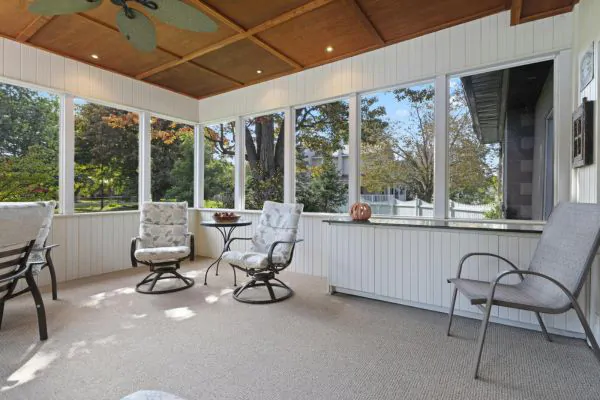
Now that we know the pros and cons of a sunroom, let’s delve into the screened porches. A screened porch presents a more open and cost-friendly option for homeowners seeking to merge indoor comfort with an outdoor feel.
Pro: 3 Season rooms
A screened porch earns its stripes as a 3-season room, ideal for soaking up the ambience of spring, summer, and fall. It stands as an inviting space during the warmer months, with its screens offering protection from annoying insects.
Come winter, the screened porch steps back, yielding to the cold. Its design, open to nature’s whims, is less suited for chillier times, nudging homeowners towards indoor retreats during the quintessential indoor season.
Pro: Low upfront cost
The initial expense of a screened porch is notably less than that of a sunroom. This cost-effectiveness stems from simpler construction requirements and the lack of necessity for elaborate heating or cooling systems.
Homeowners often choose a screened porch when budget constraints are a priority. The reduced need for expensive materials and labor makes it an attractive option for those wishing to extend their living space without a hefty price tag.
Pro: Natural light and ventilation
A screened porch excels at providing an abundance of natural light and fresh air, with the screens acting as a gateway to the elements. This infusion of sunlight and breeze enriches the living experience, connecting those inside to the outdoors without leaving the comfort of their home.
The architecture of a screened porch is designed to maximize ventilation, ensuring that the space remains airy and comfortable, particularly during warm months. By enabling airflow to circulate freely, these porches are ideal settings for enjoying natural surroundings while being sheltered from direct exposure.
Cons: Vulnerable to weatherChoosing Between a Sunroom and a Screened Porch
A downside is that screened porches are not made for unpredictable weather. Hence, it can be impractical for gatherings or relaxation during harsh conditions, as the area may become too hot, cold, or wet for use.
Because it lacks the insulated walls and climate control of a sunroom, a screened porch requires extra measures, like weatherproof furniture and temporary covers. This may limit its appeal for some homeowners as it does not cope with inclement weather.
Cons: Higher maintenance cost
The routine maintenance that a screened porch often discourages property owners. The materials, prone to weather impacts, may face wear and tear, demanding repair or replacement to maintain the porch’s integrity.
Regular cleaning of screens is necessary to clear away debris and prevent mold growth. Homeowners must account for the recurrent cost of maintaining the porch’s structure and appearance throughout its lifespan.
Choosing Between a Sunroom and a Screened Porch
Having a grasp of the pros and cons of each option can help homeowners make an informed decision about what kind of home addition is right for them. Deciding between a sunroom and a screened porch hinges on several factors about how the space will be used throughout the year. Things to keep in mind include:
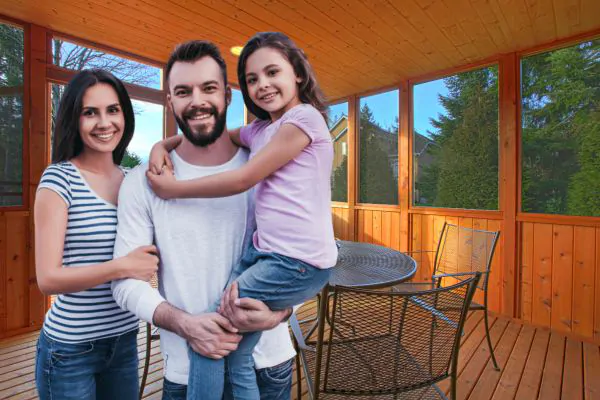
Purpose
The intended use is a critical aspect when weighing the choice between a sunroom and a screened porch. A sunroom might be best for those wanting an additional year-round living space shielded from harsh weather, while a screened porch suits those desiring a seasonal spot for enjoying outdoor ambiance without the nuisance of insects.
For activities like dining or lounging that benefit from exposure to natural elements, the screened porch stands out. In contrast, a sunroom’s climate-controlled environment is perfect for homeowners who prefer a consistent space for relaxation or work, regardless of external conditions.
Location
The property’s geographical setting is pivotal in choosing between a sunroom and a screened porch. Sunrooms provide a regulated environment advantageous in areas with extreme climate variations, shielding residents from intense heat, cold, or prolonged precipitation.
Conversely, a screened porch may be more fitting in regions with milder climates, where homeowners can relish the outdoor ambiance without concern for severe weather disrupting the use of their space.
Resale Value
A sunroom typically adds more resale value to a property than a screened porch due to its year-round utility and comfort features. Buyers often view it as an additional living space, which can justify a higher selling price for the home.
Screened porches might not offer the same return on investment as sunrooms, yet they still enhance the attractiveness of a home to potential buyers looking for outdoor living areas without the higher cost of a sunroom addition.
Budget
When contemplating a sunroom or screened porch, homeowners must scrutinize their financial allowance. A sunroom’s elaborate features necessitate a heftier upfront expenditure, while a screened porch typically requires a less substantial outlay, due to its less complex nature.
Cost considerations extend beyond the initial build, touching upon long-term expenditures such as energy consumption for a sunroom and maintenance demands for a screened porch. These recurrent costs must be accounted for within the homeowner’s budgetary framework, influencing the final decision between the two options.
Space
The space available for construction is a determining factor when deciding on an addition to a home. While sunrooms might need more room to accommodate insulation and climate control systems, screened porches can often be constructed in smaller or more irregularly shaped outdoor areas.
Homeowners must consider the scale of their project and match it with the spatial constraints of their property. A generous, unobstructed area favors a sunroom, whereas a more confined space might be more apt for a screened porch, allowing for an unforced integration with the existing home structure.
Having a basic understanding of the factors impacting outdoor living space designs and uses is
critical. It will make it easier in the long run for homeowners to choose what options are right for them. Armed with this knowledge, designing their new outdoor living area will be easier than ever!
Frequently Ask Questions
Does a Sunroom Add Value to a Home?
Yes, sunrooms add value by expanding usable space, typically recouping 50-80% of their cost in resale, depending on quality and location.
Does a Screened-In Porch Increase Home Value?
A screened-in porch adds value and can recoup 70-75% of its cost, especially in areas where outdoor living is popular.
Does a Screened-In Porch Need a Foundation?
Yes, a screened-in porch usually needs a foundation (concrete slab or post) for stability and to meet building codes.
How Long Does a Screened-In Porch Last?
With good maintenance, a screened-in porch can last 20-30 years.
Are Sunrooms Worth the Money?
Sunrooms offer lifestyle value and appeal, often worth it for enjoyment, though ROI is typically lower than traditional rooms.
Conclusion
A sunroom often aligns with those seeking a protected, year-round extension of their living space. Its insulated walls and temperature control capabilities allow for a comfortable environment, regardless of weather conditions outside.
A screened porch caters to individuals who favor a connection with the outdoors during warmer months. The simplicity of its design and the provision for natural airflow and light contribute to a relaxed atmosphere at a reduced cost.
The decision between a sunroom and a screened porch depends heavily on budget, climate, and the intended use of the space. Homeowners are encouraged to evaluate their financial capacity and lifestyle needs before making a choice.
While a sunroom commands a higher resale value, the screened porch remains a commendable feature for those appreciating a more authentic outdoor experience. Prospective buyers are drawn to the functional and aesthetic value that each option adds to a home.
Call Zappa Deck Builders and get started on your sunroom or screened porch build today!

